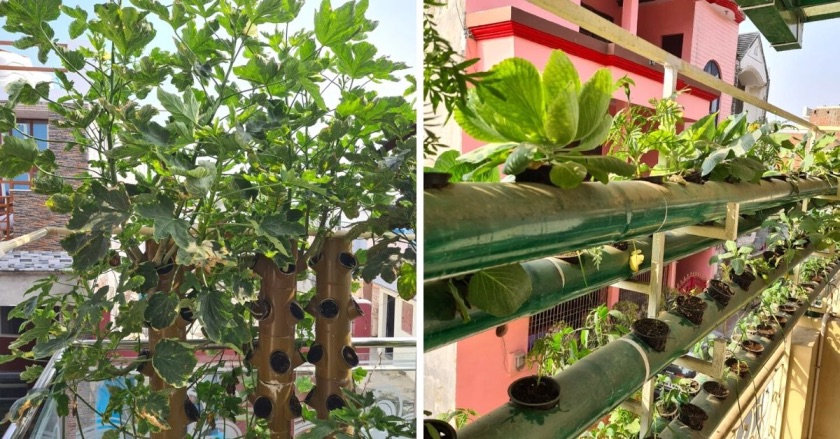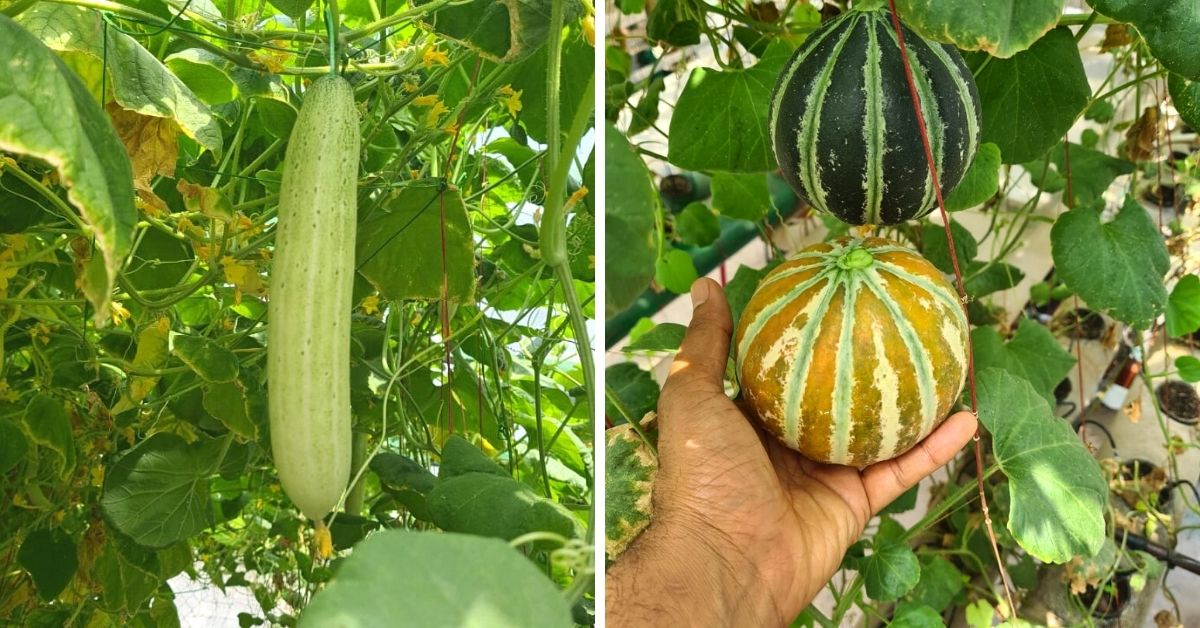In 2009, Ramveer Singh from Bareilly, Uttar Pradesh, learned that a friend’s uncle was diagnosed with cancer. Upon further research, he realised the culprit was the chemical-laced on the vegetables for the life-threatening disease.
“This scared me, and I decided to keep my family away from such risks,” he recalls.
The former full-time journalist, Ramveer decided to quit his job and dedicate his time to his ancestral land to grow organic vegetables. “The farm is 40 km away from Bareilly, and I travelled to grow the vegetables and increase the production on the land,” he tells The Better India.
Eventually, Ramveeer started working as a freelance journalist and selling the organic farm produce commercially on the side.

In 2017-18, he travelled to Dubai for an agriculture-related event and witnessed hydroponics farming. “I was enthralled about the type of farming method. It did not require soil and could be grown with less pest infestation. Moreover, it saved almost 80 per cent of water required for growing plants,” he says.
Ramveer extended his stay and learned the farming techniques from the farmers for the next couple of weeks. After returning, he decided to experiment with the farming technique at home.
His passion and love for hydroponics today has made him convert his three-storey house into a hydroponics farm that earns him lakhs.
A house with 10,000 plants
Ramveer started using pipes and other infrastructure to set up the hydroponics systems in his balcony and open spaces. “I installed two methods for the farm using Nutrient Film Technique (NFT) and Deep Flow Technique (DFT). At present, the farm is spread across 750 sq meter space, hosting over 10,000 plants,” he adds.
He grows okra, chillies, capsicum, bottle gourd, tomatoes, cauliflower, spinach, cabbage, strawberry, fenugreek and green peas. “I grow all seasonal vegetables with hydroponics. The system is designed using PVC pipes and circulates the water with the help of gravity. The arrangement ensures that about 16 nutrients such as magnesium, copper, phosphorus, nitrogen, zinc and others reach the plants by introducing them in the flowing water. The method saves 90 per cent use of water,” he explains.
Ramveer believes that the hydroponic farming technique is healthier and better than organic farming. “I feel that the vegetables grown in hydroponics farming have better absorption of nutrients. Moreover, the method has no risk of soil pollution as a neighbouring farmer practising chemical farming may expose soil or plants by spraying chemicals or pesticides in conventional farming. Hydroponics farming is independent of harmful chemicals,” he says.
Ramveer continues tending his farm located 40 km from his house but is no longer dependent on it. “I don’t need to travel a long distance for my weekly supply of vegetables. I harvest it fresh from my farm and use it in the kitchen,” he adds.

His impressive and unique farm attracted the attention of passers-by as they felt awed by the concrete building covered with vegetables hanging over the sides. “Many inquired and demanded to install the system in their homes. I have helped at least 10 persons by installing the hydroponic system for them,” he adds.
The farmer established a Vimpa Organic and Hydroponics company that earns him a revenue of Rs 70 lakh a year.
Recently, Ramveer’s hydroponics installation for a farmer in Bihar saved his produce from floods.
“Most of the farmers lost their produce during the floods. But I used the hydroponics method to plant bitter gourd and was saved during the floods due to its installation safe above the ground,” says Sanjay.
He adds that when the market opened, the average selling cost of the vegetable shot up. “The average rates are between Rs 30-40 per kilo. But the shortage increased the cost up to Rs 80 per kilo, and I profited from it,” Sanjay adds.
Today, Ramveer is content with growing soilless vegetables. “I feel proud that my efforts and unique farming method helped me and many others grow vegetables sans harmful chemicals,” he adds.
Edited by Yoshita Rao
No comments:
Post a Comment